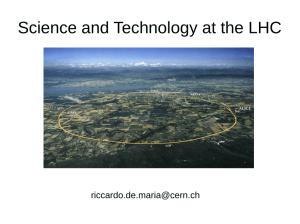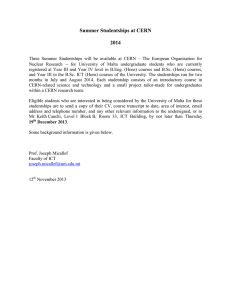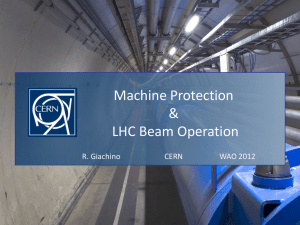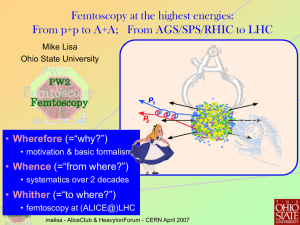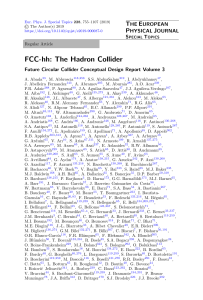100,000 Analog Devices converters within CERN’s Large Hadron Collider help scientists
advertisement
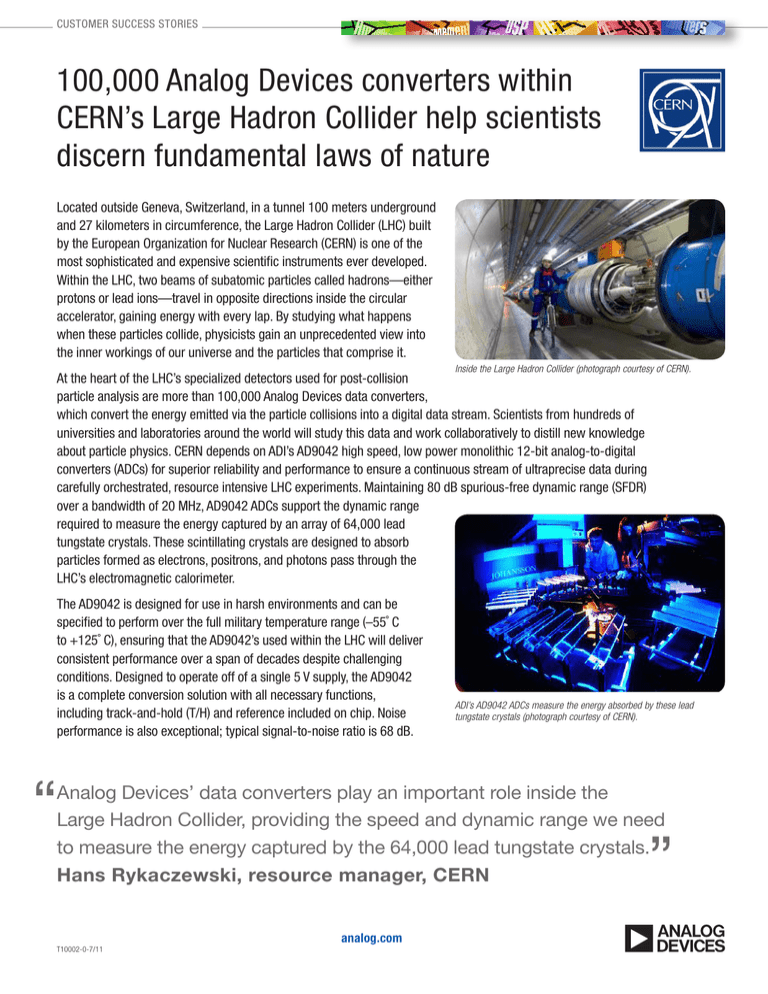
CUSTOMER SUCCESS STORIES 100,000 Analog Devices converters within CERN’s Large Hadron Collider help scientists discern fundamental laws of nature Located outside Geneva, Switzerland, in a tunnel 100 meters underground and 27 kilometers in circumference, the Large Hadron Collider (LHC) built by the European Organization for Nuclear Research (CERN) is one of the most sophisticated and expensive scientific instruments ever developed. Within the LHC, two beams of subatomic particles called hadrons—either protons or lead ions—travel in opposite directions inside the circular accelerator, gaining energy with every lap. By studying what happens when these particles collide, physicists gain an unprecedented view into the inner workings of our universe and the particles that comprise it. Inside the Large Hadron Collider (photograph courtesy of CERN). At the heart of the LHC’s specialized detectors used for post-collision particle analysis are more than 100,000 Analog Devices data converters, which convert the energy emitted via the particle collisions into a digital data stream. Scientists from hundreds of universities and laboratories around the world will study this data and work collaboratively to distill new knowledge about particle physics. CERN depends on ADI’s AD9042 high speed, low power monolithic 12-bit analog-to-digital converters (ADCs) for superior reliability and performance to ensure a continuous stream of ultraprecise data during carefully orchestrated, resource intensive LHC experiments. Maintaining 80 dB spurious-free dynamic range (SFDR) over a bandwidth of 20 MHz, AD9042 ADCs support the dynamic range required to measure the energy captured by an array of 64,000 lead tungstate crystals. These scintillating crystals are designed to absorb particles formed as electrons, positrons, and photons pass through the LHC’s electromagnetic calorimeter. The AD9042 is designed for use in harsh environments and can be specified to perform over the full military temperature range (–55˚ C to +125˚ C), ensuring that the AD9042’s used within the LHC will deliver consistent performance over a span of decades despite challenging conditions. Designed to operate off of a single 5 V supply, the AD9042 is a complete conversion solution with all necessary functions, including track-and-hold (T/H) and reference included on chip. Noise performance is also exceptional; typical signal-to-noise ratio is 68 dB. ADI’s AD9042 ADCs measure the energy absorbed by these lead tungstate crystals (photograph courtesy of CERN). Analog Devices’ data converters play an important role inside the Large Hadron Collider, providing the speed and dynamic range we need to measure the energy captured by the 64,000 lead tungstate crystals. Hans Rykaczewski, resource manager, CERN T10002-0-7/11 analog.com


